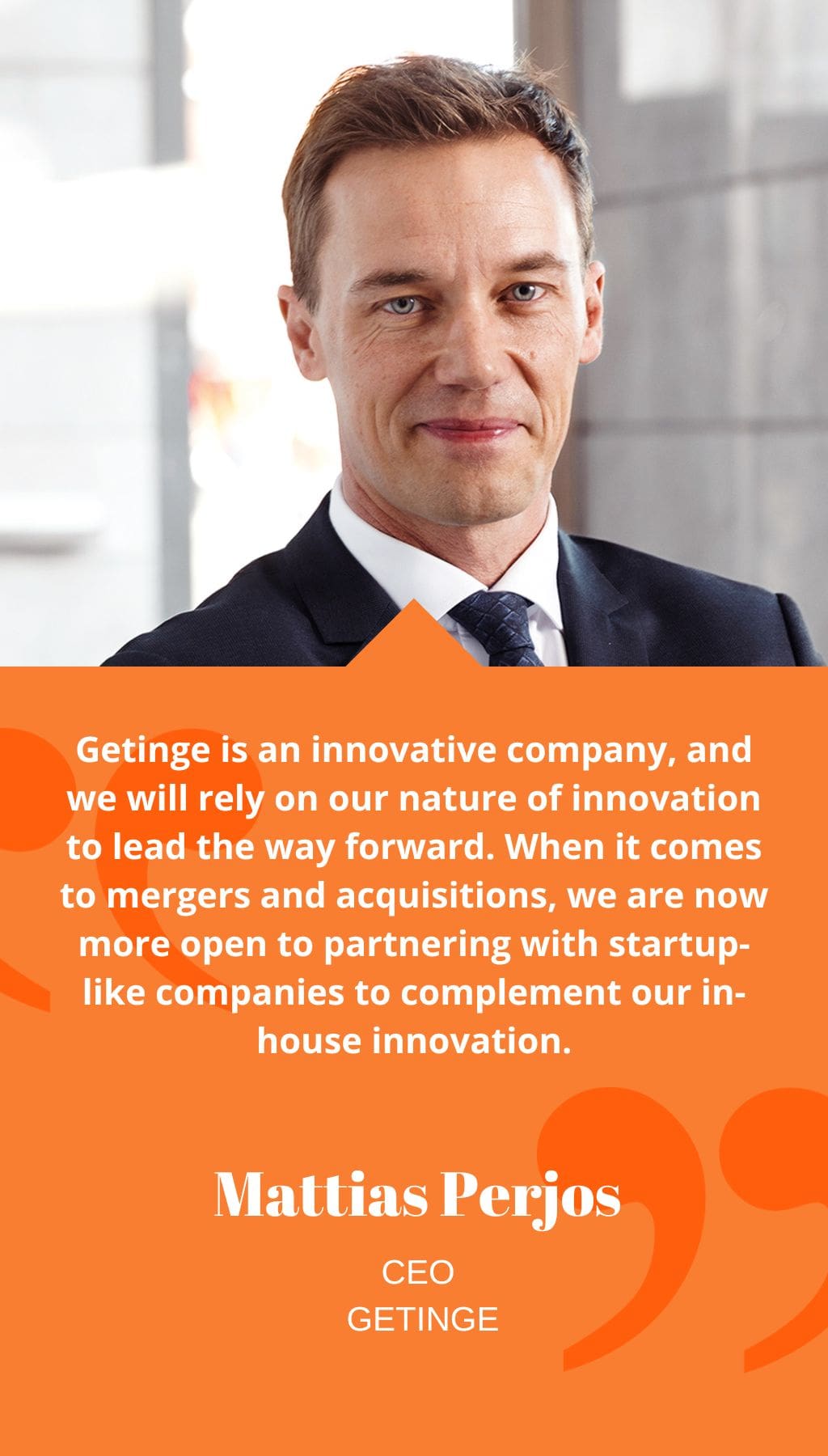
- Sweden | 20 June 2020

Since taking over as CEO in 2017, what have been your priorities for Getinge?
When I took over as CEO, my first priority was to execute the complex carve-out process with Arjo, as the decision for a spin-off had already been made. This allowed Getinge to be more focused within the hospital setting. Additionally, we conducted a strategic review and identified internal distractions as a key reason for the decline in growth. We started allocating resources and capital to address this issue and improve our growth rate. The analysis showed that Getinge had a strong market position with a broad portfolio and a solid customer base.
Looking back, do you believe the decision to split with Arjo was the right choice?
Yes, I believe it was the right decision. Being on their own has been beneficial for Arjo, and it has allowed Getinge to focus more on the hospital setting. The split reduced complexity and enabled us to prioritize our operations effectively.
Could you explain the three different business areas of Getinge and how they create value for the healthcare system?
Getinge has three business areas. First, our Life Science segment, which has a lot of growth potential due to the market trend toward biological pharmaceutical products. We are committed to growing this area and providing better solutions for research and product sterilization. Second, our Surgical Workflows business area focuses on productivity and infection control in hospitals. We offer solutions that can increase productivity and reduce healthcare-associated infections. Lastly, our largest business area is Acute Care Therapies, which emphasizes productivity and evidence-based healthcare. We have innovative technologies in areas such as cardiopulmonary and critical care.
What sets Getinge apart from the competition in terms of its portfolio?
Getinge has several standout products in its portfolio. Our extracorporeal membrane oxygenation (ECMO) therapy, NAVA technology, and software business have a significant impact in their respective fields. Infection control solutions are also crucial, as they address a critical issue in hospitals. Our strong portfolio differentiates us and allows us to provide comprehensive solutions to healthcare challenges.
Which countries are driving Getinge’s growth among the 139 countries where you sell your products?
In recent years, we have seen growth driven by emerging markets in Africa, the Middle East, and Eastern Europe. China has also shown significant growth, thanks to the efforts of our team there. The United States is another important market for us, representing a significant opportunity for further growth.
How do you plan to penetrate the US market even more?
We already have a strong position within cardiovascular therapies in the United States, and we aim to continue that momentum. We also plan to leverage our other therapies, such as critical care and surgical workflows, to offer a broader range of products and solutions. Our life science portfolio is making a comeback, and we believe it has great potential in the US market.
Approximately 14 percent of Getinge’s sales come from products launched in the past three years. Do you aim to improve this figure?
While there is no ideal number, we believe that 14 percent is on the lower end. We are working to get our new ventilation and monitoring therapies approved in the US, which would increase the contribution of new products to our sales. Additionally, we have existing products and solutions with untapped potential, such as our NAVA technology, which can make a significant impact with better marketing and training efforts.
Could you tell us about Getinge’s R&D presence in Sweden?
Getinge has three factories in Sweden: Getinge, Växjö, and Solna. Each facility has its own focus. Getinge is dedicated to the life science business segment, Växjö serves as a global center of excellence for disinfection, and Solna is an R&D center for critical care. These factories collaborate closely with customers and research institutions.
How is Getinge leveraging artificial intelligence and digitalization?
Getinge’s largest R&D investment is the collaboration with Verb Surgical, which focuses on robotics, artificial intelligence, and imaging. Additionally, all our new equipment has built-in connectivity, allowing us to monitor and gather data through platforms like Getinge Online. This input is valuable for our R&D efforts and enhances our ability to develop innovative solutions.
How is Getinge preparing for the changes brought by the new European medical technology regulation?
Getinge has already felt the impact of the regulation and has been reviewing its portfolio to determine which products will comply. Fortunately, the impact on patients is minimal, as the products being phased out are mostly variants. While the regulation presents challenges, it will create an environment that is easier to navigate in the future. We expect demands for clinical data to increase, which will require us to be more selective in the products we bring to market. Getinge is well-prepared for these changes, but we see smaller companies struggling, which is reflected in the increased opportunities for M&A.
Are there any trends that you think the industry is overlooking?
I believe the industry should place more focus on productivity and have open dialogues about it. Productivity is not solely about cost-cutting but rather about working smarter. Implementing value-based healthcare in a diligent manner is a smart approach that should be prioritized.
How advantageous is the “made in Sweden” stamp on Getinge’s products?
In many places, having the “made in Sweden” stamp is a great advantage. Sweden has a strong reputation for healthcare, innovation, and digitalization, and this reputation is often recognized by customers and stakeholders.
Looking ahead, how do you envision Getinge in five years?
In the future, we aim to reinvigorate our innovation pipeline and improve our product launches. Getinge is an innovative company, and we will rely on our nature of innovation to lead the way forward. When it comes to mergers and acquisitions, we are now more open to partnering with startup-like companies to complement our in-house innovation.














